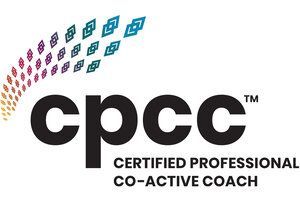Single In The City: The Joy Of Dating Yourself

Being single is now viewed as in vogue; or so we are told by the new generation of feminists who are waving goodbye to the old-fashioned ideas of settling with a husband before they hit 30, and hello to a life driven by their own dreams and desires.
This is great news for those who are content to live a single life, but what about the women who are looking to settle, and who feel their single status is a misfortune?
Being single and living in a city such as Singapore offers many rewards, such as having the freedom to pursue your own interests, appreciating quiet moments of solitude and learning how to enjoy your own company. However, being single in the city can also feel isolating.
It is likely your weekends are spent at parties surrounded by couples, your social media is full of engagements, weddings and babies, and when you drag yourself to family events, you get the dreaded “why aren’t you married yet?” question.
Dating for women can be difficult in a place like Singapore. If you are an expatriate, you will have found that many expatriate men have come here with their partners. For those men who have arrived single, the party lifestyle and staying single can be all too enticing.
Finding a man who is looking to settle down can feel like looking for a needle in a haystack.
Even when a woman finds a man who is looking for something serious, there is always the risk they will be whisked away to another country due to work or family commitments. It can be confusing and disheartening to be living in such a transient city.
While you can increase your chances of meeting the right man, there is a large element fate, chance and divine intervention in whether you will meet ‘Mr Right’. However, you do have some influence over these outcomes, so let’s focus on gaining power over things you can change and let the rest happen naturally.
You can influence your happiness because ultimately, you are in control of the choices that lead to it.
Happiness is described as ‘the overall experience of pleasure and meaning’. Meaning is needed to give you a sense of purpose in life, and pleasure provides a sense of joy.
If you want to feel happier, add pleasure or meaning to your life. The best thing about this? You do not need another person to help you.
Here are 4 ways in which you can increase your happiness while you wait for Mr Right to come knocking at your door.
1. Why wait to date a man? Create your own dream dates.
Why are you waiting for someone else to cook your favourite meal, light candles, play your favourite music or to run you a luxurious bubble bath? Do it for yourself and enjoy being cared for by the one most important person in your life - you.
Me-dates do not need to be kept at home. Doing things alone can be incredibly uplifting as you come to enjoy your own company. Start with a coffee alone, then go for lunch. Build up your confidence until you feel comfortable to dress-to-impress and eat at a fancy restaurant - the difference here is that the only person you want to impress is yourself.
Why stop at simple date nights? Book that trip you have been dreaming of and join the thousands of people who are traveling solo. A study released in May 2018 found that “there is also a surge in solo travel.. with 40% of baby boomers having taken a solo trip in the last year, and a further 21% planning to take one in the future”.
By going out of your way to look after yourself, you begin to cultivate your self-esteem. This is something that many people overlook but it is one of the most significant aspects to feeling fulfilled.
It is important that you can rely on yourself to nurture your self-esteem and not become reliant on the opposite sex to make you feel worthy. You ARE worthy, and the better your treat yourself, the more you will start believing it.
2. Mates-dates will have you laughing so hard your tummy hurts.
Gather your girls for a pizza night, evening of cocktails or a healthier option such as a long walk or yoga class. Make it even simpler and take your best friend out on a date of their dreams. Making others happy will in turn create that warm fuzzy feeling for you too.
The support of your friends may enable you to try something more adventurous such as a new exercise class or learning a new skill. Weekends away exploring nearby attractions adn trips abroad are also a great way to connect with friends while at the same time exploring the world.
You may have heard the phrase, “friends are the family you choose for yourself”. This illustrates the importance of nurturing your friendships and keeping the connections strong. This can be even more significant for expatriates who live many miles from their family and require a strong support system around them in their new home country.
3. Focus on what you have, not what you do not have.
It is easy to look at people in relationships and wish that could be you. When you find yourself doing this, I urge you to focus not on what is lacking in your life but instead focus on what you do have.
Gratitude is repeatedly hailed as the secret to happiness and it is so for a reason. When you feel you are going down a negative thought pattern, make a list of 10 things you are grateful for. The list can be mental, or you can write it down. Personally, I prefer to write it down as this helps to cement it in my mind. Your list can include small details such as being grateful someone held the door for you at work, or it can include bigger details such as having supportive and loving family/friends.
4. Take the time and energy to develop self-awareness.
As a therapist, I am naturally a big proponent of therapy. It can be very beneficial to spend time with a therapist and explore exactly who you; what are your desires, values and goals and how can you ensure you are fulfilling these in your life.
Self-awareness can also be fostered through meditation. Sit comfortably, close your eyes and observe your thoughts. Do not try and change them, or judge them, just observe them. It can feel strange at first, but try to embrace all of the emotions you are feeling. Having a meditation practice can be an incredibly self-educational experience when it is practiced consistently.
The ideas I have provided here I recommend to anyone, no matter what your relationship status may be. The outcomes of the above actions are increased gratitude, understanding and acceptance, which are the pillars for feeling fulfilled.
Single in the City: The Joy of Dating is the first in a series of blog posts aimed at supporting those who are finding it hard living as a single person. If this resonates with you, do not hesitate to contact Dr. Freya who specialises in self-esteem and can support you to overcome any negativity you are experiencing.
About the Author:
Dr. Freya strongly believes in the science of Positive Psychology and uses her wealth of knowledge in this area to help clients overcome issues they face, enabling them to feel more positive towards themselves and their lives. Freya has a PhD in Psychology, is a qualified Yoga Teacher, and has completed courses in Meditation and Buddhist Studies. Read Full Bio >










